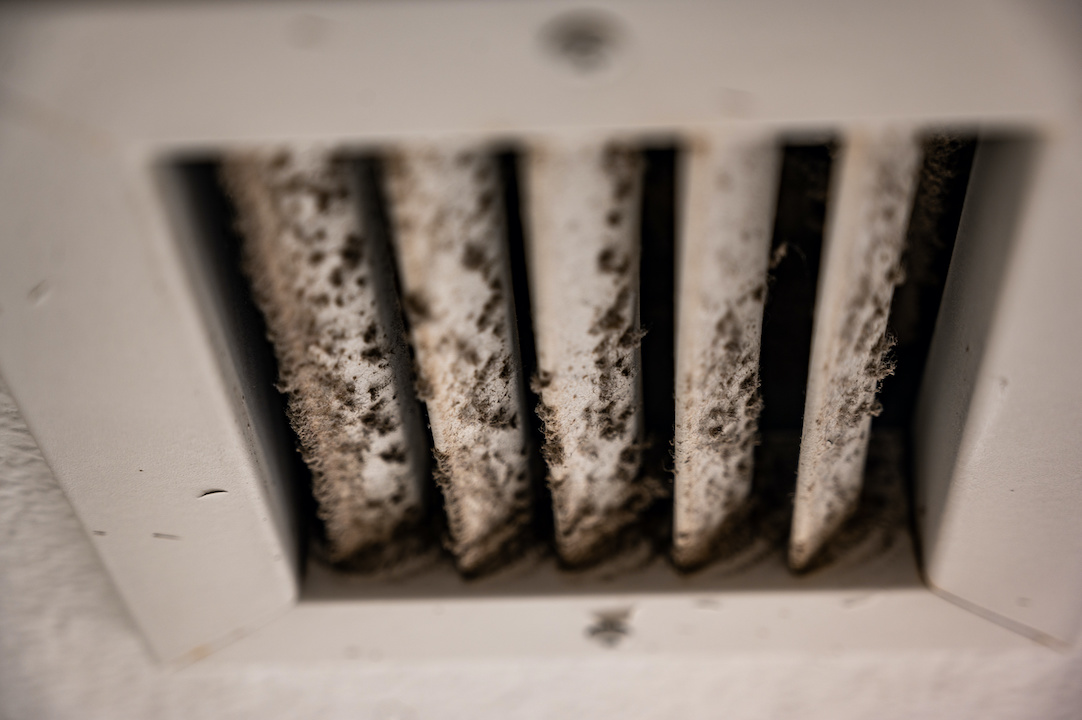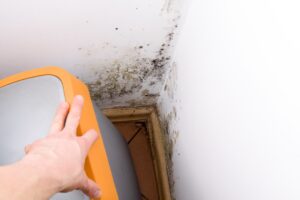Have you ever caught a glimpse of those unsightly black or green specks around your vents and felt a shiver down your spine? Yep, that’s mold making itself at home in places it shouldn’t. Besides being a total eyesore, mold on vents can be a silent threat to your health and comfort. But fear not! We’re here to arm you with the knowledge and tools to kick mold to the curb and keep it from coming back.
Why Mold Loves Your Vents (And How to Show It the Door)
Mold thrives in moist, warm environments, and unfortunately, your home’s ventilation system can offer it the perfect breeding ground. Whether it’s from condensation, leaks, or high humidity levels, once mold sets up shop in your vents, it can spread its spores throughout your home, compromising air quality and potentially leading to health issues.
The Unseen Hazards of Mold
Breathing in mold spores isn’t exactly a recipe for health. For some, it can cause allergic reactions, asthma attacks, and other respiratory issues. Especially for the young, the elderly, and those with compromised immune systems, mold exposure is a no-go.
Mold-Busting 101: A Step-by-Step Guide
- Safety First: Don protective gear like gloves, masks, and goggles. Mold means business, and so should you when it comes to your safety.
- Inspection Time: Identify all the moldy areas around your vents. Sometimes, it’s lurking more discreetly than you might think.
- Cut Off the Water Source: Mold’s lifeblood is moisture. Fix leaks and consider a dehumidifier to keep humidity levels in check.
- Clean-Up Crew: For non-porous surfaces, a solution of water and mild detergent can work wonders. For more stubborn mold, you might need to bring in the big guns – a mix of water and bleach, or a commercial mold remover.
- Ventilation Vigilance: Ensure your vents are properly insulated to prevent condensation, and regularly clean vent covers to discourage mold growth.
Prevention: The Best Mold Defense
Monitor Humidity: Keeping the indoor humidity levels in check is crucial in the fight against mold. Aim to maintain humidity below 60%, ideally between 30% and 50%, to create an environment that’s less inviting to mold. Use a hygrometer to monitor these levels regularly. During humid months, dehumidifiers can be a game-changer, pulling excess moisture from the air and thwarting mold’s growth plans. Also, simple habits like venting bathrooms and kitchens, drying wet areas promptly, and avoiding overwatering indoor plants can significantly reduce indoor humidity.
Regular Maintenance: An ounce of prevention is worth a pound of cure, especially when it comes to your ventilation and HVAC systems. Regular checks and cleaning are your first line of defense. Ensure air filters are replaced according to the manufacturer’s recommendations, or even more frequently if you’re in a high-pollen or dusty area. Cleaning your ductwork and ensuring your HVAC system is in tip-top shape not only improves air quality but also prevents mold spores from taking a joyride throughout your home. Don’t forget about your dryer vents! Lint buildup not only poses a fire hazard but can also restrict airflow, contributing to moisture accumulation.
Air Flow is Your Friend: Proper ventilation is a key player in the anti-mold playbook. Encourage the flow of fresh air through your home by opening windows when weather permits, using exhaust fans in kitchens and bathrooms, and ensuring that vents and air intakes are not blocked by furniture or curtains. Consider cross-ventilation strategies—opening windows across the house from each other—to enhance airflow. This natural ventilation helps to move moist air out and bring dry air in, disrupting mold’s moisture-rich playground.
Extra Tips for a Mold-Resistant Home:
- Seal Leaks: Regularly inspect your home for leaks in the roof, windows, and pipes. Promptly addressing these can prevent water from seeping into areas prone to mold growth.
- Invest in Mold-Resistant Products: Whether you’re building a new home or renovating, consider using mold-resistant drywall or paint, especially in high-moisture areas like bathrooms, kitchens, and basements.
- Landscaping Wisdom: Ensure your home’s landscaping directs water away from the foundation. Proper drainage can prevent water from pooling around your home, minimizing the risk of basement or crawlspace mold.
Implementing these preventative measures can significantly reduce the risk of mold making itself at home in your vents and throughout your living space. With diligence and regular maintenance, you can create a healthier, mold-resistant environment.
Wrapping Up: A Mold-Free Future
Tackling mold on vents might seem daunting, but with the right approach, it’s entirely manageable. Remember, prevention is key. By keeping your home dry, well-ventilated, and regularly maintained, you can enjoy a healthier, mold-free environment.
Do you have more questions or tips on dealing with mold? Contact us – we’d love to hear from you!








